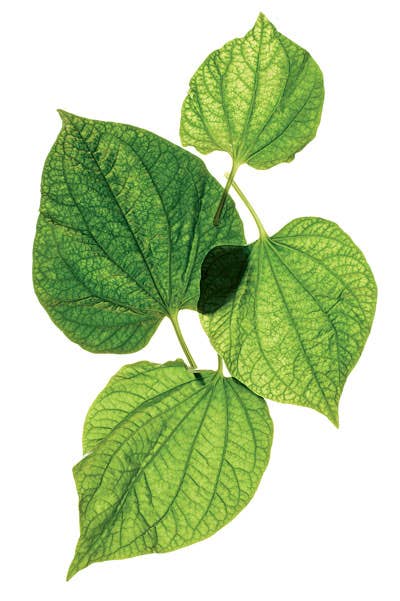
Betel Leaves
One of my most vivid memories of my Vietnamese-American family is the aroma of bo la lot, seasoned beef wrapped in betel leaves and grilled over charcoal. I remember my excitement at seeing the tidy rolls lined up on the grill, the glistening betel leaves crisping at the edges. Inside, the filling of marinated ground beef and lemongrass would remain succulent, protected from the searing heat by the leafy wrapper. The fire would release the leaves' fragrant oils and brisk, peppery flavors. Many people in Southeast and South Asia chew cultivated betel leaves (Piper betle) as a stimulant and a breath freshener, but milder-tasting wild betel leaves (Piper sarmentosum) are more often employed in cooking. I use the leaves, which I find fresh or frozen at Asian grocery stores, to make not just Vietnamese dishes but also Thai ones, like miang kam, a snack in which peanuts, coconut, dried shrimp, onion, garlic, ginger, chiles, and lime are wrapped in a betel leaf to make a bite-size package. They also add a zesty kick to my nasi ulam, a Malaysian rice salad. —Hong Pham, Los Angeles, California
Keep Reading
Continue to Next Story










